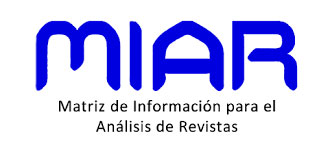THE HISTORICAL EVOLUTION OF GENDER EQUALITY FROM THE PRISM OF THE UNITED NATIONS ORGANIZATION
DOI:
https://doi.org/10.51743/ihering.106Keywords:
UN, Equality, Dictatorship, II Republic, Gender, ConferencesAbstract
This work has focused on synthesizing the evolution of gender equality within the United Nations through several stages. Each stage outlines which of the UN’s actions have been most instrumental in the fight against discrimination, while drawing comparisons to gender equality in Spain. Prior to the birth of the UN, Spanish women had full capacity to act, specifically during The Second Republic. However, this was not the case following the outbreak of The Civil War and the establishment of The Dictatorship. Radical changes occurred in Spanish society in these moments, resulting in women remaining subordinate to men and limiting their ability to act. As the UN continues to make advances, it is in Spain’s best interest to move away from the aforementioned period and to place itself in the same position as the other UN countries. This can be achieved by focusing its public powers on two specific objectives: by modifying laws and raising awareness pertaining to gender equality.
Downloads
Global Statistics ℹ️
|
3437
Views
|
1417
Downloads
|
|
4854
Total
|
|
References
ALBERDI, I., (2011). “Temas y desafíos de la igualdad entre los géneros el liderazgo de las Naciones Unidas”, Pensamiento Iberoamericano, nº 9, Madrid.
ARTEAGA ANSA, T., (1995). “¿Qué ha supuesto la Conferencia de Pekín para las mujeres?”, Emakunde, País Vasco.
CARRILLO SALCEDO, J. A. (1995). Soberanía del Estado y Derechos Humanos, Tecnos, Madrid.
DOMÍNGUEZ MARTÍN, R. y SÁNCHEZ-SÁNCHEZ, N. (2007). “Las diferencias salariales por género en España durante el desarrollismo franquista”, Reis, nº. 107, Cantabria.
MÁRQUEZ CARRASCO, C. (2009). “Los Derechos Humanos de las mujeres, la justicia penal internacional y la perspectiva de género, Investigación y género, avance en las distintas áreas de conocimiento”, Idus, Sevilla.
MORAGA GARCÍA, M. (2008). “Notas sobre la situación jurídica de la mujer en el Franquismo”, Feminismos, nº. 12, Madrid. DOI: https://doi.org/10.14198/fem.2008.12.09
MOREYRA, M. J. (2005). “Perspectiva de género: la importancia de la Corte Penal Internacional”. Relaciones Internacionales, vol. 14, nº 28.
NUÑO, L. (2009). “Evolución del tratamiento de la igualdad de género en el ámbito internacional”, Gaceta Sindical, nº12.
PECES-BARBA MARTÍNEZ, G. (1995). Curso de derechos fundamentales. Teoría General, Madrid, Universidad Carlos III de Madrid, Boletín Oficial del Estado.
RIVERO MÉNDEZ, I., (2006). “Las cuatro conferencias mundiales de la ONU sobre la mujer relato testimonial”, Agentes de igualdad de oportunidades: acciones positivas en el marco de la cooperación, por Rosa María MARTÍNEZ SEGARRA, Celia María PARCERO TORRE, Miren Josune AGUINAGA ROUSTAN, Universitas Internacional, Madrid.
TERÁN VELASCO, M. (2015). “La transversalidad de género. Valoraciones a partir de algunos documentos de las Naciones Unidas”, Anuario Español de Derecho Internacional.
SOLANAS, M., (2014). “Igualdad de género y política exterior española”, Análisis del Real Instituto Elcano, nº 21, Madrid, 2014.
Downloads
Published
How to Cite
Issue
Section
License
The Fundación Universitaria Española publishing house preserves the patrimonial rights (copyright) of published works, and encourages and allows their reuse. The works are published in the electronic edition of the journal under a license "Creative Commons Attribution / Attribution-NonCommercial 4.0 International Public License - CC BY-NC 4.0", and can be copied, used, disseminated, transmitted and publicly exhibited.
The undersigned author /s partially transfer the property rights (copyright) of this work to the Fundación Universitaria Española (Spain) (NIF: G28433670), for the printed and online editions.
It also declares to have respected the ethical principles of research and to be free from any conflict of interest.

























1.png)
1.png)

1.png)
.png)
.png)

.png)
1.png)
1.png)
